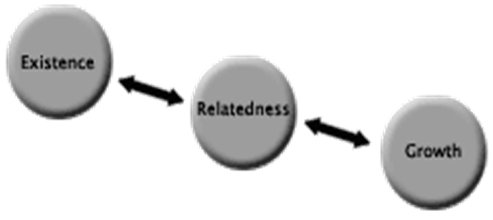Classical Theories of Motivation
April 3, 2025
 Classical Theories of Motivation
Classical Theories of Motivation
The motivation concepts were mainly developed around 1950’s. Three main theories were made during this period. These three classical theories are- Maslow’s hierarchy of needs theory Herzberg’s Two factor theory Theory X and Theory Y These theories are building blocks of the contemporary theories developed later. The working mangers and learned professionals till date use…
 Why Intrinsic Motivation Matters More Now In the Times of the Great Resignation
Why Intrinsic Motivation Matters More Now In the Times of the Great Resignation
What is Intrinsic Motivation and how does it tie in with the Great Resignation? Among the different types of motivation, Intrinsic Motivation, or the ability of individuals to motivate themselves according to their inner needs and higher selves, matters more than ever in the present Post Pandemic Times. This is because due to WFH or…
 Workplace Motivation – Carrot or Stick approach doesnt work anymore
Workplace Motivation – Carrot or Stick approach doesnt work anymore
“I am in this job because I have no other option.” If this is what an employee of your company feels, read on to know how this statement can be changed to something more positive – “I love what I do.” First things first – whose responsibility is it to ensure that an employee loves…
To bring Maslow’s need hierarchy theory of motivation in synchronization with empirical research, Clayton Alderfer redefined it in his own terms. His rework is called as ERG theory of motivation. He recategorized Maslow’s hierarchy of needs into three simpler and broader classes of needs:

The significance of the three classes of needs may vary for each individual.
While according to ERG theory, if a higher-level need aggravates, an individual may revert to increase the satisfaction of a lower-level need. This is called frustration-regression aspect of ERG theory.
For instance – when growth need aggravates, then an individual might be motivated to accomplish the relatedness need and if there are issues in accomplishing relatedness needs, then he might be motivated by the existence needs. Thus, frustration/aggravation can result in regression to a lower-level need.
According to Alderfer, an individual can work on growth needs even if his existence or relatedness needs remain unsatisfied. Thus, he gives explanation to the issue of “starving artist” who can struggle for growth even if he is hungry.
Managers must understand that an employee has various needs that must be satisfied at the same time.
According to the ERG theory, if the manager concentrates solely on one need at a time, this will not effectively motivate the employee. Also, the frustration-regression aspect of ERG Theory has an added effect on workplace motivation.
For instance – if an employee is not provided with growth and advancement opportunities in an organization, he might revert to the relatedness need such as socializing needs and to meet those socializing needs, if the environment or circumstances do not permit, he might revert to the need for money to fulfill those socializing needs. The sooner the manager realizes and discovers this, the more immediate steps they will take to fulfill those needs which are frustrated until such time that the employee can again pursue growth.
Your email address will not be published. Required fields are marked *